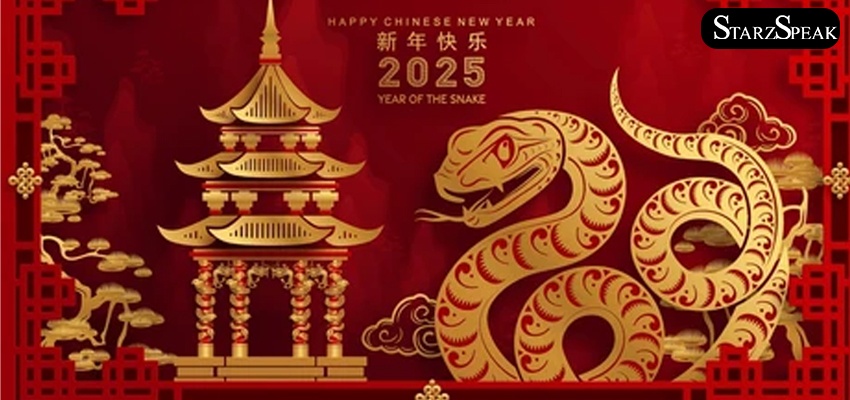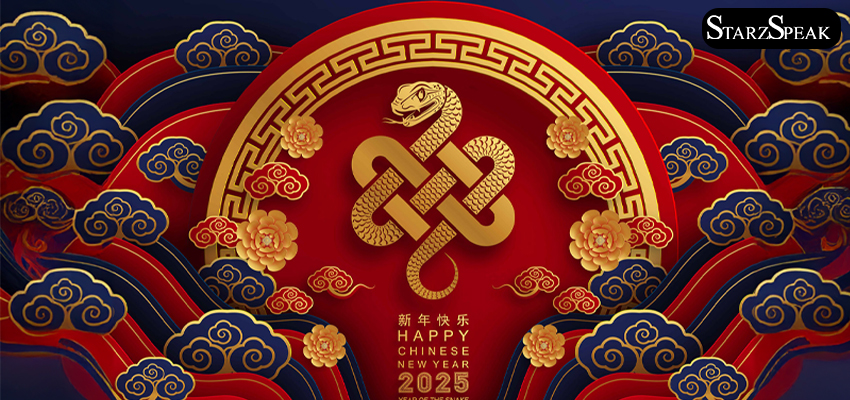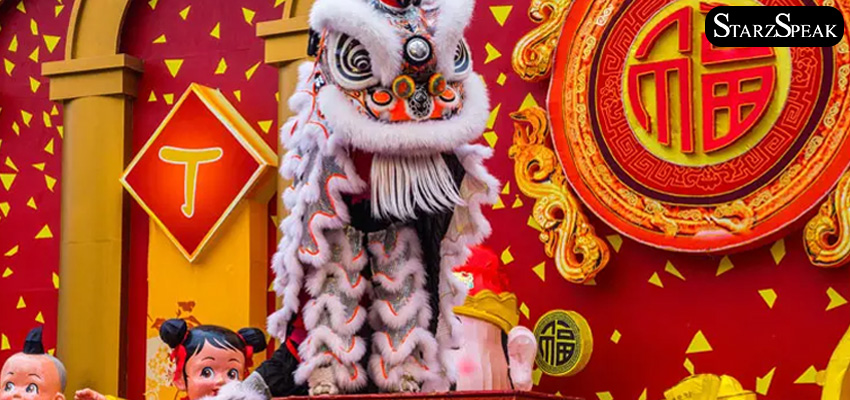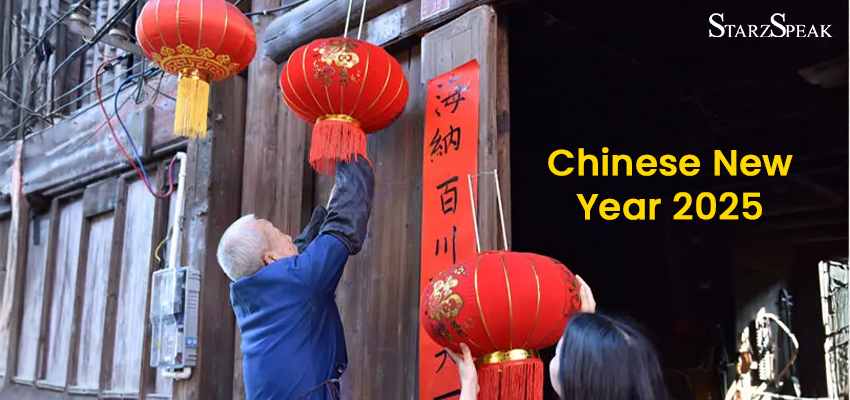

Chinese New Year 2025 : Year Of the Snake This New Year
BY : Dr. Meera Anand – Vedic Astrologer & Horoscope SpecialistTable of Content
Chinese New Year, also called Lunar New Year or the Spring Festival, is the most significant celebration in China and holds great importance in several East Asian countries. This vibrant festival marks the start of a new year according to the traditional Chinese lunisolar calendar.
Chinese New Year 2025 will be celebrated on Wednesday, January 29th. While the exact date shifts each year, it always falls between January 21st and February 20th.
Historically, this festival was a time to pay respects to deities and honor ancestors. Over the years, it has evolved into a cherished occasion filled with family gatherings, sumptuous feasts, and joyous traditions.
Chinese New Year 2025 Traditions and Celebrations
Although customs and traditions differ across regions, they all share a common theme: bidding farewell to the old year and embracing the luck and prosperity of the new one. The core activities of Chinese New Year typically include:
- Decorating homes and public spaces
- Honoring ancestors with offerings
- Sharing a festive reunion dinner with family on New Year's Eve
- Exchanging red envelopes and thoughtful gifts
- Enjoying firecrackers and dazzling fireworks displays
- Watching vibrant lion and dragon dance performances
Tidying Up and Adorning Homes with Red Decorations
In preparation for the Spring Festival, people thoroughly clean their homes, a symbolic act of sweeping away the misfortunes of the past year and creating space for good luck to enter.
Red takes center stage during the celebrations, as it is considered an auspicious color associated with prosperity, vitality, and protection against negative energies. Streets are adorned with glowing red lanterns, while red couplets and festive New Year images are proudly displayed on doors, adding to the vibrant atmosphere.

Also Read : Saraswati Puja 2025: माँ सरस्वती की पूजा एवं वंदना से होता है बुद्धि का विकास
Making Offerings to Honor Ancestors
Honoring ancestors is a deeply respected tradition during Chinese New Year. Many families visit ancestral graves the day before the New Year, offering sacrifices to pay their respects. Before the reunion dinner, offerings are made to symbolically let their ancestors "dine" first. Additionally, an extra glass is placed at the dinner table on New Year's Eve as a gesture of remembrance and inclusion.
Celebrating Lunar New Year's Eve with a Family Reunion Dinner
Lunar New Year is all about family togetherness, and New Year's Eve holds the most significance. No matter how far they may be, people make it a priority to return home to celebrate with loved ones. The traditional New Year's Eve meal, known as the "reunion dinner," brings together extended families spanning multiple generations. They gather around round tables to share a feast and cherish quality time together.
Exchanging Red Envelopes and Gifts
A hallmark of Chinese New Year is the tradition of giving red envelopes, also known as lìshì or lai see in Cantonese. These envelopes, filled with money, are commonly given to children and retired seniors.
The money inside, referred to as ya sui qian (压岁钱 /yaa sway chyen/), symbolizes protection against evil spirits and misfortune. Receiving a red envelope comes with wishes for a safe and peaceful year ahead, making it a cherished part of the celebration.

Also Read : Ugadi 2025: क्यों मनाया जाता है उगादी, क्या है इसका महत्व एवं पूजा विधि
Lighting Up the Sky with Firecrackers and Fireworks
Setting off firecrackers and fireworks is an integral part of Chinese New Year celebrations, from grand public displays in major cities to intimate gatherings in rural areas. This tradition is believed to drive away evil spirits and herald the arrival of the new year with joy and excitement.
At midnight on New Year's Eve, billions of fireworks illuminate the skies across China, marking the most extensive use of fireworks at any time of the year.
Enjoying Lion and Dragon Dances
Lion and dragon dances are iconic performances during the Lunar New Year, commonly seen across China and in Chinatowns worldwide. These vibrant displays are believed to usher in prosperity and good fortune for the year or event ahead.
Other popular Chinese New Year traditions include wearing new clothes, staying up late on New Year's Eve, and tuning in to the Spring Festival Gala, among many others.
Duration of Chinese New Year 2025 Celebrations
Traditionally, Chinese New Year celebrations span 16 days, beginning on Chinese New Year's Eve and culminating with the Lantern Festival. In 2025, the public holiday will be observed from January 28th to February 4th, lasting 8 days.
Chinese New Year Foods
Food plays a central role in Chinese New Year celebrations, with dishes symbolizing luck and prosperity. Fish is a must-have, as its pronunciation resembles the word for "surplus," representing abundance. Dumplings, shaped like ancient Chinese silver ingots, are enjoyed as a symbol of family unity and wealth.
Niángāo (glutinous rice cake) is also a favorite, as it sounds like "year high," signifying progress and an increase in income or status. These lucky foods are served throughout the 16-day festival, with particular emphasis on the New Year's Eve family reunion dinner.

Also Read : Pongal Festival 2025: जानिए क्या है 4 दिवसीय पोंगल पर्व का महत्व और इतिहास
Chinese New Year 2025 Superstitions: Things to Avoid
In Chinese tradition, it's believed that the way the year begins can influence the rest of the year, making the Spring Festival a time rich with superstitions. The appearance (color, shape) and sound of things are thought to carry either good or bad luck. As such, there are several taboos to follow during the celebrations:
- Avoid sweeping on New Year's Day, as it is said to "sweep away your luck."
- Refrain from eating porridge for breakfast, or you might "become poor in the coming year."
- Don't wash your clothes or hair on New Year's Day, as it's believed to "wash away your fortune."
2025 Chinese Zodiac Animal: Earth Snake
Each year in the Chinese zodiac is linked to a specific animal, and 2025 will be the year of the Snake, specifically the Earth Snake.
Year |
Date of Chinese New Year |
Animal Sign |
|
2024 |
February 10 |
Dragon |
|
2025 |
January 29 |
Snake |
|
2026 |
February 17 |
Horse |
|
2027 |
February 6 |
Goat |
|
2028 |
January 26 |
Monkey |
|
2029 |
February 13 |
Rooster |
|
2030 |
February 3 |
Dog |
|
2031 |
January 23 |
Pig |
|
2032 |
February 11 |
Rat |
Also Read: Lohri 2025: 13 जनवरी को ही क्यों मनाते है लोहड़ी एवं क्या है इसका महत्व ?
Author: Dr. Meera Anand – Vedic Astrologer & Horoscope Specialist
Dr. Meera Anand, a Vedic astrologer with 12+ years’ experience, delivers accurate weekly, monthly, and yearly forecasts, helping readers make confident life decisions with clarity and guidance.






.png)